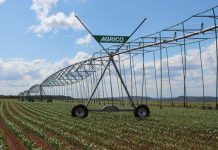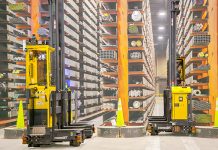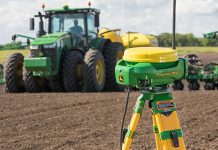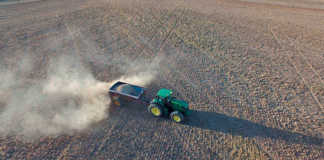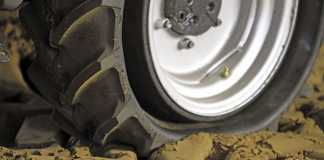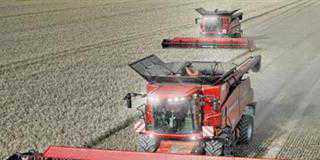
The John Deere Progator 2030A is ideally suited to the undulating cane lands of KwaZulu-Natal. It has a low centre of gravity, is highly manoeuvrable and has a low overall weight, reducing soil compaction during spraying operations. The Progator has a 16,5kW three-cylinder liquid-cooled diesel engine 4WD and a five-speed synchromesh transmission. Hydraulic disc brakes can stop the unit on hillsides with a full load.
The spray boom covers seven 1,2m cane rows and the 100/60 nozzles spray a 600mm wide band directly onto each row. Tank capacity is 1 100l and the fertiliser is applied at a rate of up to 3t/ha. Working speed is usually about 5km/h, but 9km/h can be achieved on level ground. Top road speed is 30km/h.
Nutri-Flo provides a free soil sampling service at the beginning of each season. Samples are sent to the South African Sugar Research Institute (Sasri) on behalf of the grower, who pays for the analysis. Using Sasri’s recommendations, a Nutri-Flow representative compiles a fertilisation programme.
Blending takes place according to a land-by-land analysis of the requirements. Growers can choose from a range of products to suit their soils, including nitrogen in the form of urea, ammonium nitrate or UAN (urea and ammonium nitrate) and potassium from concentrated molasses stillage (CMS) or potassium chloride.
About CMS
Thanks to Nutri-Flo, concentrated molasses stillage (CMS) has emerged as a replacement for potassium chloride, providing an excellent source of organically rich fertiliser for depleted soils in cane-growing areas. One field evaluation has shown that reducing the moisture content of molasses stillage, a by-product of the manufacture of ethanol, produces a concentrate containing 44% to 46% moisture and 38% to 40% organic material.

The Progator tank being filled from the back-up tanker.
The total mineral fraction comprises 27,5% to 31,5% on a dry matter basis, of which potassium is the dominant nutrient followed in decreasing concentration by chloride, sulphur, calcium, magnesium and phosphorus. Copper appears to be the most abundant trace element, followed by manganese, zinc and cobalt.



